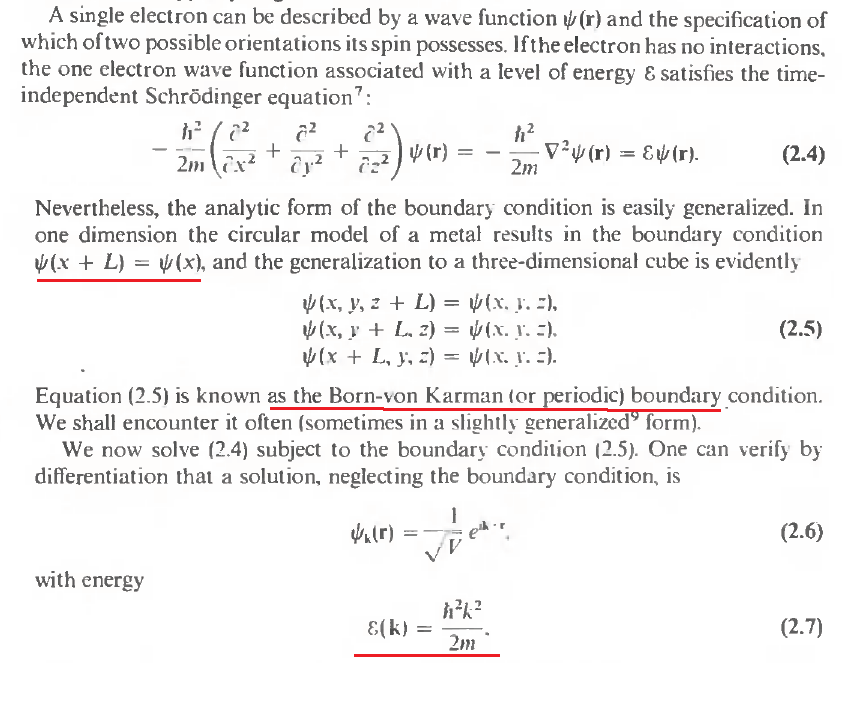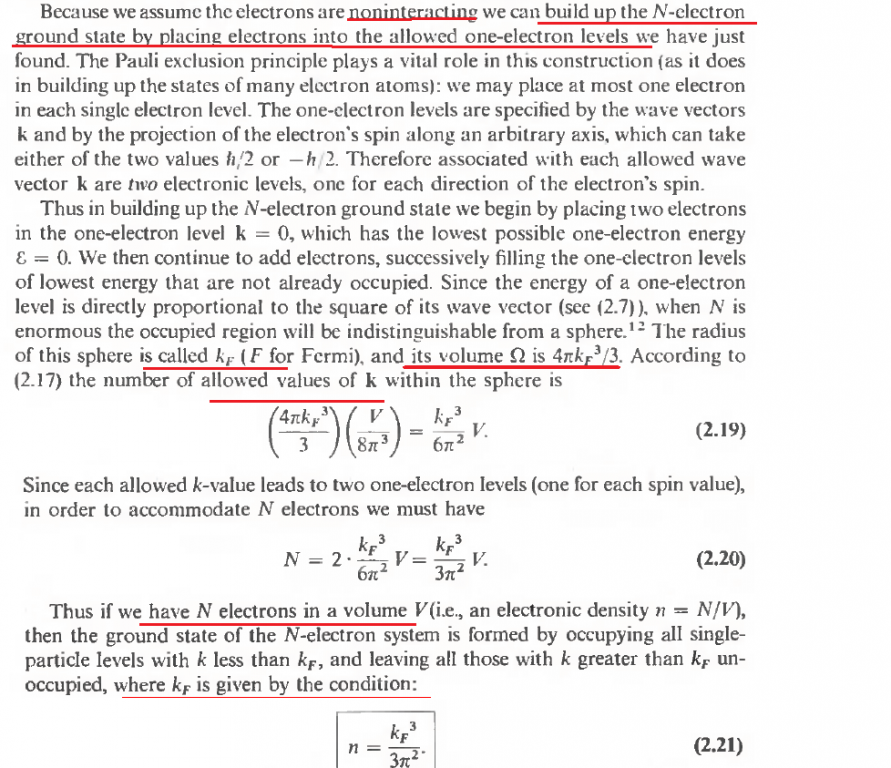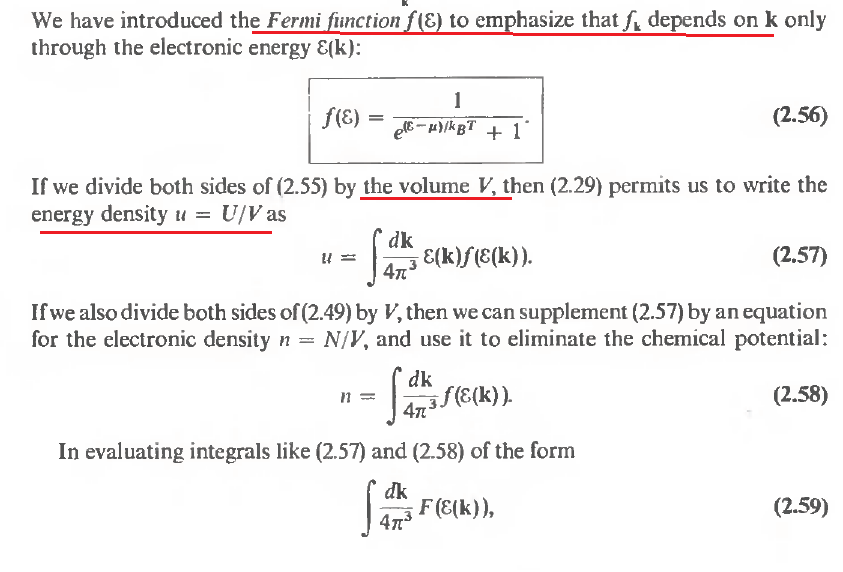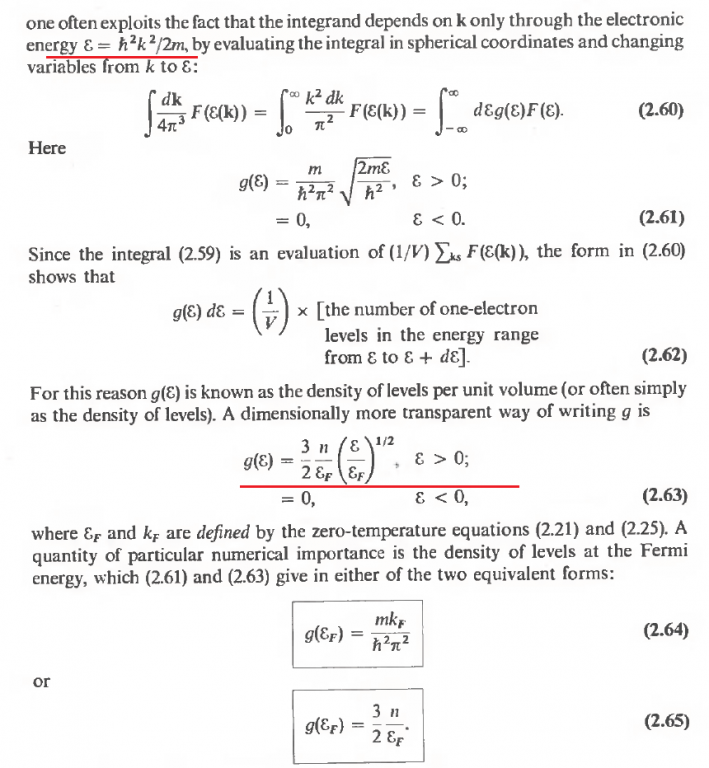博文
自由电子费米能级之问答
||
关注:
1) 怎样理解 the DOS for equivaalent free-electron systems.
2) 怎样清楚明了的问答问题。
答:
答:
Dear Xiao-qiu,
The formulas you have there are correct, but you also need the equation for the general density of states of the free 3D electron gas. That is found, for example, in Neil’s book, chapter 2 (equation 2.63 in my German edition):
DOS(E) = 3/2*N/Ef*sqrt(E/Ef).
The way to obtain a plot such as in my figures below is as follows:
1. Set Ef to the bandwidth of the actual DOS (around 60eV in my case below).【为什么】
2. Set N=1. (表明对单电子情形,处理的晶胞中有几个电子除以几)
3. Plot DOS(E) as written above, but with an energy offset of -Ef.
【DOS(E) = -3/2*N/Ef*sqrt(-(E-Ef)/Ef).】 Ef取费米能级以下的带宽,取负值。
To judge a “good” metal is not so easy, even the DOS only gives you indirect information. In my opinion, a “good” metal is a good electric conductor, so technically you would have to calculate the conductivity. That is beyond our scope usually, so we say that if the DOS is “high” at the Fermi energy (maybe 0.3-0.5 or higher with respect to the free electron value) than we assume that the conductivity will also be high.
Hope that helps, let me know if there are any issues.
Best wishes,
Andreas
问:
Dear Andreas,
First of all, I hope everything goes very well with you.
I met a small problem when I read your paper recently, as shown in the picture below. Could you briefly tell me:
1) How to get the free-electron DOS per electron with a certain bandwidth? For example, I also want to plot the free-electron DOS and the DOS of scandium hydrides together to check whether the hydrides are good or poor metals. I got these two equations from the textbook, but I don’t know how to use them to solve this problem exactly.
2) It may be the same question as 1). How to get the DOS for equivalent free-electron systems (the red dot in the second figure)?
3) How do we judge whether a compound is a good or bad metal by N(EF)?
Sorry to trouble you so much.
Looking forward to your kindly comments.
Best wishes,
Xiaoqiu
*****************************************************************
解读:









https://blog.sciencenet.cn/blog-567091-743946.html
上一篇:Build-intuition之 电子结构与晶体结构
下一篇:电声耦合常数计算:成功一例